Description
Drain-line heating cables are specialized electrical devices designed to prevent the freezing of pipes and drains in cold climates or environments where temperature fluctuations pose a risk of ice formation. These cables provide a reliable solution for maintaining the flow of liquids in drainage systems by delivering controlled heat to the pipes. In this article, we delve into the functionality, applications, and benefits of drain-line heating cables.
Functionality of Drain-Line Heating Cables:
1. Heat Generation:
Drain-line heating cables generate heat through electrical resistance. When connected to a power source, the cable’s resistance causes it to produce heat, which is then transferred to the surrounding pipe or drain. The heat output is carefully controlled to prevent overheating while effectively maintaining the temperature above freezing levels.
2. Thermostatic Control:
Many drain-line heating cables are equipped with thermostatic controls or temperature sensors. These devices monitor the temperature of the pipe or drain and automatically adjust the heat output of the cable to ensure optimal performance. Thermostatic control helps conserve energy by only activating the heating cable when necessary, thus minimizing operational costs.
3. Self-Regulating Technology:
Some advanced drain-line heating cables feature self-regulating technology. This technology enables the cable’s heat output to adjust dynamically based on ambient temperature changes and pipe conditions. As the temperature decreases, the cable’s resistance increases, resulting in higher heat production to counteract the cold. Conversely, as the temperature rises, the cable’s resistance decreases, reducing heat output accordingly.
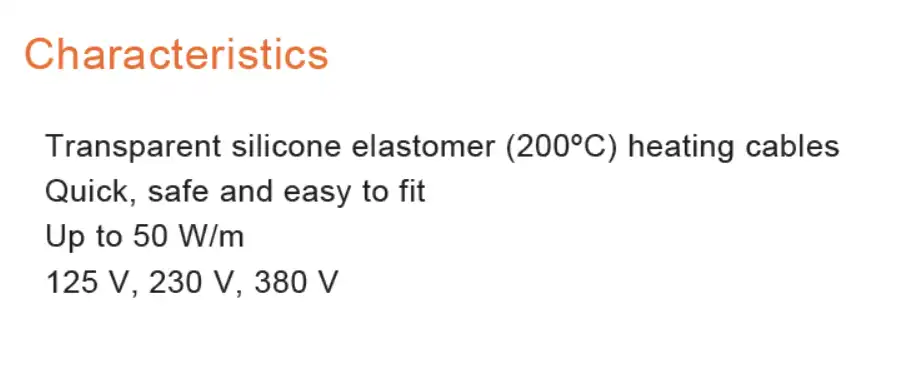
Benefits of Drain-Line Heating Cables:
1. Prevents Freezing and Ice Damage:
By maintaining the temperature of pipes and drains above freezing levels, drain-line heating cables prevent ice formation and the associated damage, including pipe bursts, blockages, and leaks. This helps avoid costly repairs and downtime, particularly in critical applications.
2. Energy Efficiency:
Drain-line heating cables with thermostatic control and self-regulating technology optimize energy usage by only activating when needed. This results in energy savings compared to constant heating methods, contributing to lower operational costs and environmental sustainability.
3. Reliability and Safety:
High-quality drain-line heating cables are engineered for durability, reliability, and safety. They undergo rigorous testing and comply with industry standards to ensure consistent performance and minimize the risk of electrical hazards or malfunctions.
Drain-line heating cables offer an effective solution for preventing the freezing of pipes and drains in residential, commercial, and industrial applications. With their heat generation capabilities, thermostatic control, and self-regulating technology, these cables provide reliable protection against ice damage while promoting energy efficiency and system reliability. By understanding the functionality, applications, and benefits of drain-line heating cables, businesses and homeowners can safeguard their drainage systems and mitigate the risks associated with cold weather conditions.
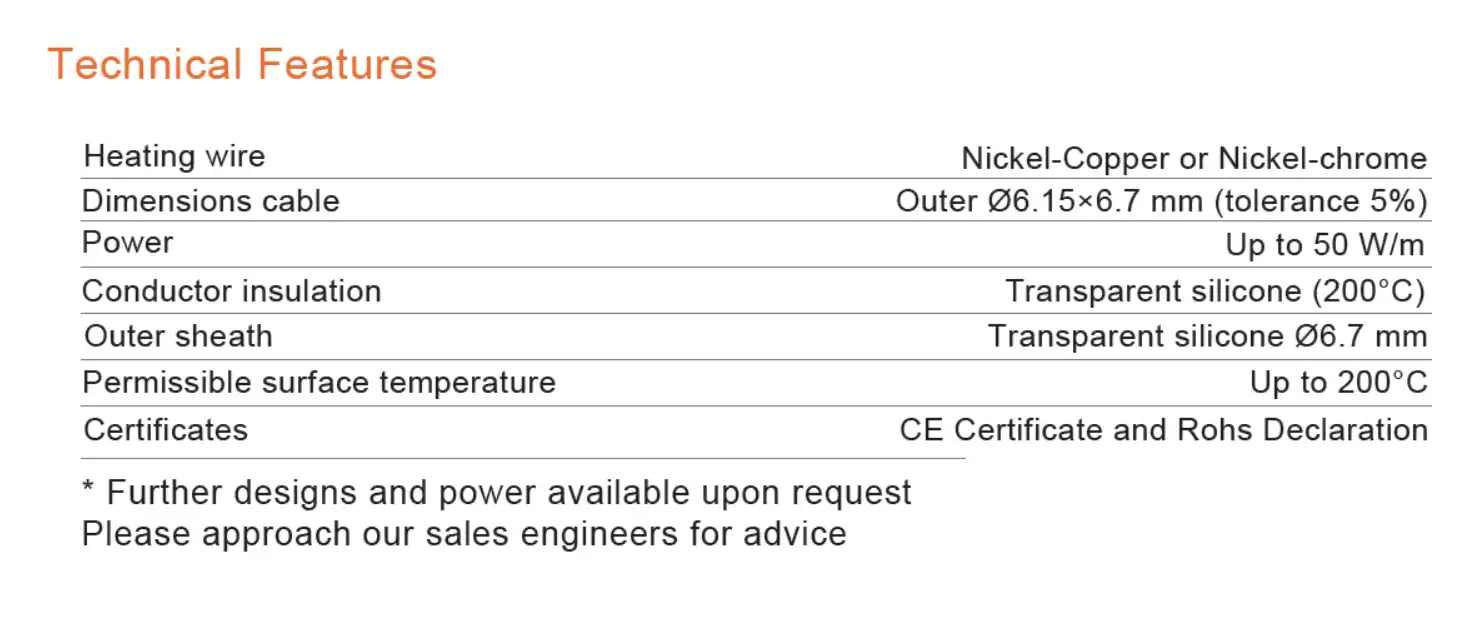
What are the applications of a Drain-Line Heating Cable?
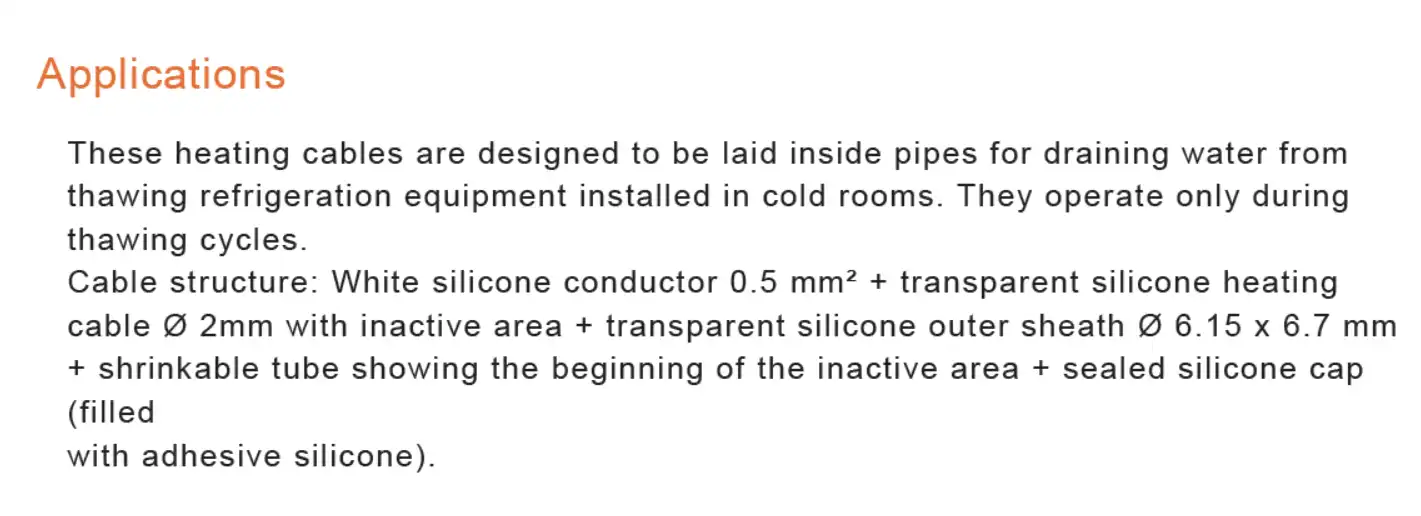
Drain-line heating cables are versatile solutions used in a wide range of applications to prevent freezing and maintain the flow of liquids in pipes and drainage systems. From residential settings to industrial facilities, these cables offer reliable protection against the damaging effects of cold weather. In this article, we explore the diverse applications of drain-line heating cables and their importance in different environments.
Residential Applications:
1. Exterior Drainage Systems:
In residential properties, drain-line heating cables are commonly installed along exterior drainage pipes, gutters, downspouts, and roof edges. These cables prevent the formation of ice dams and icicles by maintaining the temperature of the drainage system above freezing levels. By ensuring continuous water flow, they protect homes from water damage caused by ice buildup.
2. Roof and Gutter De-Icing:
Drain-line heating cables are utilized to de-ice roofs and gutters during winter months. By melting snow and ice accumulation, these cables prevent the formation of ice dams, which can lead to roof leaks and structural damage. Properly installed heating cables along roof edges and in gutters help maintain the integrity of residential roofing systems.
3. Freeze Protection for Plumbing:
In cold climates, drain-line heating cables are installed in vulnerable areas of residential plumbing systems to prevent pipe freezing. These cables are commonly used in uninsulated crawl spaces, attics, and exterior walls where pipes are susceptible to freezing temperatures. By providing consistent heat, drain-line heating cables protect pipes and prevent costly damage and water leaks.
Commercial and Industrial Applications:
1. Industrial Process Pipelines:
Drain-line heating cables are essential for maintaining the functionality of industrial process pipelines in facilities such as chemical plants, refineries, and food processing plants. These cables prevent the freezing of process fluids and ensure continuous flow, preserving product quality and preventing production disruptions.
2. Petrochemical Industry:
In the petrochemical industry, drain-line heating cables are used to protect pipes and valves containing hazardous materials from freezing. By maintaining the temperature of these critical components, heating cables safeguard against potential leaks, spills, and safety hazards associated with cold weather conditions.
3. Wastewater Treatment Plants:
Drain-line heating cables play a crucial role in wastewater treatment plants by preventing the freezing of drainage pipes and equipment. In cold climates, wastewater systems are vulnerable to ice buildup, which can disrupt operations and lead to equipment damage. Heating cables ensure uninterrupted flow and help maintain optimal conditions for wastewater treatment processes.
HVAC and Refrigeration Systems:
1. Condensate Drain Lines:
Drain-line heating cables are integrated into HVAC and refrigeration systems to prevent the freezing of condensate drain lines. During cold weather, condensate can accumulate and freeze inside drain lines, leading to blockages and system malfunctions. Heating cables ensure continuous drainage and prevent costly repairs.
2. Refrigeration Defrosting:
In commercial refrigeration systems, drain-line heating cables are used to facilitate defrosting of evaporator coils and drain pans. By preventing ice buildup in these components, heating cables help maintain the efficiency and reliability of refrigeration equipment, ensuring optimal performance and food safety compliance.
Drain-line heating cables find extensive applications across residential, commercial, industrial, and HVAC systems, offering vital protection against freezing and ice buildup in pipes and drainage systems. Whether in residential gutters, industrial pipelines, or refrigeration equipment, these cables play a crucial role in maintaining system functionality, preventing damage, and ensuring operational continuity in cold weather conditions. By understanding the diverse applications of drain-line heating cables, businesses and homeowners can implement effective solutions to protect their infrastructure and mitigate the risks associated with freezing temperatures.
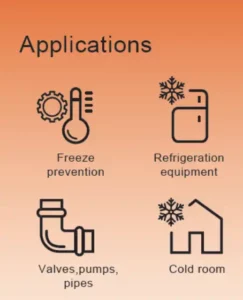
Why should you choose a Drain-Line Heating Cable over other types?
When it comes to preventing freezing and maintaining the flow of liquids in pipes and drainage systems, drain-line heating cables offer distinct advantages over other types of heating solutions. From their efficiency and versatility to their ease of installation and energy-saving features, drain-line heating cables stand out as reliable and cost-effective options for a wide range of applications. In this article, we explore the reasons why choosing drain-line heating cables over other alternatives is advantageous.
Efficiency and Precision Heating:
1. Targeted Heat Distribution:
Drain-line heating cables provide precise and targeted heat distribution along pipes and drainage systems. Unlike conventional heating methods, such as space heaters or heat tapes, which may generate excessive heat or uneven temperatures, drain-line heating cables deliver consistent warmth exactly where it’s needed. This ensures efficient operation and minimizes energy waste.
2. Self-Regulating Technology:
Many drain-line heating cables feature self-regulating technology, allowing them to adjust their heat output based on ambient temperatures and pipe conditions. This intelligent heating capability optimizes energy consumption by automatically reducing heat output when temperatures rise, thereby preventing overheating and reducing operational costs.
Versatility and Adaptability:
1. Customizable Length and Configuration:
Drain-line heating cables are available in various lengths and configurations to accommodate different pipe sizes and layouts. This flexibility allows for custom installations tailored to specific requirements, ensuring comprehensive coverage and effective freeze protection for both residential and industrial applications.
2. Compatibility with Diverse Environments:
Drain-line heating cables are designed to withstand harsh environmental conditions, including extreme temperatures, moisture, and corrosive substances. Whether installed in outdoor drainage systems, industrial pipelines, or refrigeration equipment, these cables exhibit exceptional durability and reliability, making them suitable for a wide range of environments.
Ease of Installation and Maintenance:
1. Simple Installation Process:
Installing drain-line heating cables is relatively straightforward and can be completed with minimal effort and expertise. Unlike complex heating systems that require extensive planning and construction, drain-line heating cables can be easily retrofitted onto existing pipes and drainage systems, reducing installation time and costs.
2. Low Maintenance Requirements:
Once installed, drain-line heating cables typically require minimal maintenance to ensure optimal performance. With durable construction and built-in temperature control features, these cables operate reliably for extended periods without the need for frequent adjustments or inspections, saving both time and resources.
Energy Efficiency and Cost Savings:
1. Reduced Energy Consumption:
Drain-line heating cables are designed to operate efficiently and consume less energy compared to traditional heating methods. By utilizing advanced technologies such as self-regulating heat output and thermostatic controls, these cables minimize energy waste and help lower utility bills, making them a cost-effective solution for long-term freeze protection.
2. Prevention of Costly Damage:
Investing in drain-line heating cables can help prevent costly damage caused by frozen pipes and drainage systems. By maintaining continuous flow and preventing ice buildup, these cables mitigate the risk of pipe bursts, water leaks, and property damage, saving homeowners and businesses from expensive repairs and disruptions.
Drain-line heating cables offer numerous advantages over other types of heating solutions, including efficiency, versatility, ease of installation, and cost savings. Whether used in residential, commercial, or industrial applications, these cables provide reliable freeze protection and ensure the uninterrupted flow of liquids in pipes and drainage systems. By choosing drain-line heating cables, individuals and businesses can enjoy peace of mind knowing that their infrastructure is safeguarded against the damaging effects of cold weather.
Why should you choose SVR Trace for purchasing a Drain-Line Heating Cable?

When it comes to selecting a supplier for drain-line heating cables, SVR Trace stands out as a trusted and reliable choice. With a commitment to quality, innovation, and customer satisfaction, SVR Trace offers a range of superior heating solutions tailored to meet the diverse needs of residential, commercial, and industrial applications. In this article, we explore the compelling reasons why choosing SVR Trace for purchasing drain-line heating cables is advantageous.
1. High-Quality Products:
SVR Trace is renowned for its high-quality drain-line heating cables, engineered to deliver exceptional performance and reliability. These cables are manufactured using premium materials and state-of-the-art technology, ensuring durability, efficiency, and long-term functionality in challenging environments. With SVR Trace products, customers can trust that they are investing in top-of-the-line solutions that exceed industry standards.
2. Extensive Product Range:
SVR Trace offers an extensive selection of drain-line heating cables to suit various pipe sizes, configurations, and heating requirements. Whether for residential gutter de-icing, industrial process pipelines, or HVAC condensate drains, SVR Trace provides versatile solutions tailored to specific applications. Customers have the flexibility to choose from a diverse range of products to meet their unique freeze protection needs.
3. Customization Options:
In addition to standard product offerings, SVR Trace provides customization options to accommodate specific project requirements. Whether it’s custom cable lengths, power ratings, or special configurations, SVR Trace works closely with customers to develop tailored solutions that address their unique challenges. This level of customization ensures optimal performance and efficiency for every application.
4. Expert Technical Support:
SVR Trace is committed to providing exceptional customer service and technical support throughout the purchasing process. From product selection and design assistance to installation guidance and troubleshooting, SVR Trace’s team of experts is dedicated to helping customers find the right heating solution for their needs. With prompt and reliable support, customers can feel confident in their decision to choose SVR Trace.
5. Energy Efficiency:
SVR Trace’s drain-line heating cables are designed for energy efficiency, incorporating advanced technologies such as self-regulating heat output and thermostatic controls. These features optimize energy consumption by delivering heat only when and where it’s needed, resulting in lower operating costs and reduced environmental impact. By choosing SVR Trace, customers can enjoy significant energy savings without compromising on performance.
6. Industry Compliance and Certification:
SVR Trace’s drain-line heating cables adhere to stringent industry standards and certifications, ensuring compliance with safety and quality requirements. Whether it’s UL (Underwriters Laboratories), CSA (Canadian Standards Association), or other regulatory certifications, SVR Trace products meet the highest standards of reliability and safety. Customers can trust in the integrity and compliance of SVR Trace’s products for their freeze protection needs.
Choosing SVR Trace for purchasing drain-line heating cables offers numerous benefits, including high-quality products, extensive product range, customization options, expert technical support, energy efficiency, and industry compliance. With a commitment to excellence and customer satisfaction, SVR Trace stands as a trusted partner for residential, commercial, and industrial freeze protection applications. By selecting SVR Trace, customers can enjoy peace of mind knowing that they have chosen a reliable and dependable supplier for their heating needs.
What are the Drain-Line Heating Cable sizes?
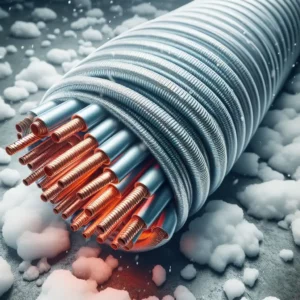
Drain-line heating cables are available in various sizes and configurations to accommodate different pipe diameters, lengths, and heating requirements. Selecting the right size of drain-line heating cable is essential to ensure effective freeze protection and optimal performance in residential, commercial, and industrial applications. In this article, we delve into the factors influencing drain-line heating cable sizes and provide guidance on choosing the appropriate size for specific needs.
Factors Influencing Drain-Line Heating Cable Sizes:
1. Pipe Diameter:
The size of the pipe or drainage system determines the diameter of the drain-line heating cable needed for effective coverage. Larger pipes require heating cables with higher wattage ratings to generate sufficient heat and maintain temperatures above freezing levels. Conversely, smaller pipes may require lower wattage cables to prevent overheating and energy waste.
2. Length of the Drainage System:
The length of the drainage system being protected influences the overall size and length of the drain-line heating cable required. Longer drainage systems may necessitate the use of multiple heating cables or longer continuous cables to provide comprehensive coverage and ensure uniform heat distribution along the entire length of the pipes.
3. Heating Requirements:
The specific heating requirements of the application, such as the desired temperature maintenance level and environmental conditions, dictate the size and power rating of the drain-line heating cable. Applications requiring higher temperatures or operating in extreme cold climates may necessitate larger, higher wattage cables to achieve adequate freeze protection.
Choosing the Right Drain-Line Heating Cable Size:
1. Calculate Pipe Length and Diameter:
Begin by measuring the length and diameter of the pipes or drainage system that requires freeze protection. Accurate measurements are essential for selecting the appropriate size and length of the drain-line heating cable to ensure complete coverage and effective heat distribution.
2. Determine Wattage Requirements:
Consider the heating requirements of the application, including the desired temperature maintenance level and ambient conditions. Calculate the required wattage based on factors such as pipe size, insulation levels, and environmental temperature extremes. Consult with heating cable manufacturers or suppliers for guidance on determining the optimal wattage rating for your specific needs.
3. Consult Manufacturer Recommendations:
Refer to the manufacturer’s specifications and recommendations for selecting the right size of drain-line heating cable for your application. Manufacturers often provide sizing guides and technical support to assist customers in choosing the appropriate cable size based on pipe dimensions, heating requirements, and environmental factors.
4. Consider Safety and Energy Efficiency:
Ensure that the selected drain-line heating cable size aligns with safety standards and energy efficiency considerations. Avoid undersized cables that may not provide adequate freeze protection or oversized cables that could lead to excessive energy consumption and operational costs. Choose a size that strikes the right balance between effective freeze protection and efficient operation.
Selecting the right size of drain-line heating cable is crucial for ensuring reliable freeze protection and optimal performance in residential, commercial, and industrial applications. By considering factors such as pipe diameter, length, heating requirements, and manufacturer recommendations, individuals and businesses can choose the appropriate cable size to meet their specific needs. With the proper sizing, drain-line heating cables offer effective freeze protection, energy efficiency, and peace of mind in cold weather conditions.
Drain-Line Heating Cable price
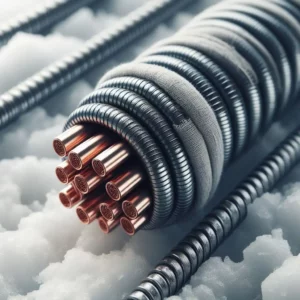
Drain-line heating cables are essential components in various industries and residential settings, offering reliable freeze protection for pipes and drainage systems. When considering the purchase of drain-line heating cables, understanding the pricing factors is crucial for making informed decisions. In this article, we delve into the intricacies of drain-line heating cable prices, exploring the factors that influence costs and considerations for buyers.
Factors Influencing Drain-Line Heating Cable Prices:
1. Cable Length and Thickness:
One of the primary factors influencing drain-line heating cable prices is the length and thickness of the cable required for the installation. Longer cables and thicker cables designed for larger pipe diameters or higher wattage applications typically command higher prices due to increased material and manufacturing costs. Buyers must accurately assess the length and thickness needed based on their specific requirements to estimate costs effectively.
2. Power Output and Wattage:
Drain-line heating cables are available in various power ratings to accommodate different heating needs. Cables with higher wattage outputs are suitable for larger pipes or more demanding applications but may come at a premium compared to lower wattage options. Buyers should carefully consider the required power output based on factors such as ambient temperature, pipe material, and insulation levels to ensure adequate freeze protection while optimizing cost-effectiveness.
3. Type of Heating Element:
The type of heating element used in drain-line heating cables can also impact pricing. Different heating technologies, such as self-regulating, constant wattage, or mineral-insulated cables, offer varying levels of performance and efficiency. While advanced technologies may come with higher upfront costs, they can provide long-term benefits in terms of energy savings and reliability, making them a worthwhile investment for certain applications.
4. Thermostatic Controls and Accessories:
Drain-line heating cables equipped with thermostatic controls or temperature sensors may incur additional costs compared to basic cable options. However, these features offer precise temperature regulation and energy-saving capabilities by activating the heating cable only when needed. Additionally, accessories such as cable clips, termination kits, and insulation may contribute to overall project costs but are essential for ensuring proper installation and performance.
5. Manufacturer Reputation and Quality:
The reputation and quality of the manufacturer also play a significant role in determining drain-line heating cable prices. Established brands known for their reliability, durability, and adherence to industry standards may command higher prices compared to lesser-known manufacturers. However, investing in high-quality cables from reputable suppliers can provide peace of mind and minimize the risk of premature failure or performance issues.
Considerations for Buyers:
1. Total Cost of Ownership:
When evaluating drain-line heating cable prices, buyers should consider the total cost of ownership over the lifespan of the product. While upfront costs are important, factors such as energy efficiency, maintenance requirements, and longevity can significantly impact overall costs. Choosing high-quality cables with energy-saving features and long-term warranties may result in greater cost savings and return on investment.
2. Installation and Maintenance Expenses:
In addition to the cost of the heating cables themselves, buyers should factor in installation and maintenance expenses. Complex installations, specialized equipment requirements, and ongoing maintenance can add to the overall project costs. Obtaining quotes from experienced installers and considering long-term maintenance needs can help buyers accurately budget for these additional expenses.
3. Regulatory Compliance and Certification:
It’s essential to ensure that drain-line heating cables comply with relevant industry standards and safety regulations. Cables with certifications from recognized organizations such as UL (Underwriters Laboratories) or CSA (Canadian Standards Association) may command slightly higher prices but offer assurance of quality and compliance. Buyers should prioritize safety and reliability when selecting heating cables for their applications.
Drain-line heating cable prices are influenced by various factors, including cable length, power output, heating technology, manufacturer reputation, and regulatory compliance. Buyers must carefully evaluate these factors and consider the total cost of ownership to make informed purchasing decisions. By understanding the intricacies of drain-line heating cable prices and considering factors such as installation, maintenance, and quality, buyers can select the most suitable cables for their freeze protection needs while optimizing cost-effectiveness and reliability.
Drain-Line Heating Cable installation
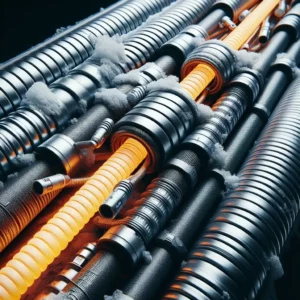
Installing drain-line heating cables is a crucial step in safeguarding pipes and drainage systems against freezing temperatures and ice buildup. Proper installation ensures optimal performance and reliability, preventing costly damage and disruptions. In this guide, we provide a comprehensive overview of drain-line heating cable installation, covering key steps, considerations, and best practices.
1. Assessing Installation Requirements:
Before beginning the installation process, it’s essential to assess the specific requirements of the drainage system. This includes identifying the areas prone to freezing, determining the length and configuration of heating cables needed, and assessing the power source availability and electrical requirements.
2. Selecting the Right Cable:
Choose drain-line heating cables that are suitable for the application, taking into account factors such as pipe size, ambient temperatures, and power requirements. Consideration should also be given to the cable’s features, such as self-regulating technology, thermostatic controls, and insulation properties, to ensure optimal performance and energy efficiency.
3. Planning the Installation:
Develop a detailed installation plan that outlines the layout and positioning of the heating cables along the drainage system. Consider factors such as accessibility, obstructions, and proximity to electrical outlets. Proper planning ensures comprehensive coverage and effective freeze protection.
4. Preparing the Surface:
Prepare the surface of the pipes or drainage system by cleaning and removing any debris or obstructions. Ensure that the surface is dry and free from contaminants to facilitate proper adhesion of the heating cables.
5. Installing the Heating Cables:
Begin by securing the heating cables along the length of the pipes or drainage system according to the installation plan. Use appropriate fastening methods, such as cable ties, clamps, or adhesive tape, to ensure secure attachment. Avoid overlapping or crossing the cables to prevent hot spots or uneven heating.
6. Making Electrical Connections:
Follow the manufacturer’s instructions for making electrical connections to the heating cables. Ensure that all connections are properly insulated and waterproofed to prevent moisture ingress and electrical hazards. Use approved junction boxes, connectors, and electrical conduit as necessary to comply with safety regulations.
7. Testing the System:
After completing the installation, perform thorough testing of the drain-line heating system to ensure proper operation. Check for continuity, insulation resistance, and voltage levels to verify that the cables are functioning correctly. Monitor the temperature of the pipes or drainage system during operation to confirm adequate heat distribution.
8. Insulating the System (Optional):
Consider adding insulation to the pipes or drainage system to enhance the efficiency of the heating cables and minimize heat loss. Insulation helps retain heat within the system, reducing energy consumption and improving overall performance, especially in cold climates.
9. Conducting Regular Maintenance:
Establish a routine maintenance schedule to inspect and maintain the drain-line heating system regularly. Check for any signs of damage, wear, or malfunction, and promptly address any issues to prevent potential problems and ensure continued reliability.
Proper installation of drain-line heating cables is essential for effective freeze protection and reliable operation of pipes and drainage systems. By following the steps outlined in this guide and adhering to best practices, homeowners, contractors, and facility managers can ensure successful installation and long-term performance of their heating systems. Investing time and effort into proper installation pays off in the form of reduced maintenance costs, improved energy efficiency, and peace of mind knowing that the drainage system is protected against freezing temperatures and ice buildup.

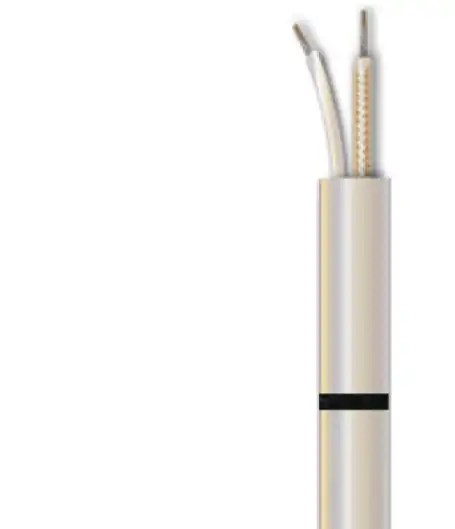
Reviews
There are no reviews yet.